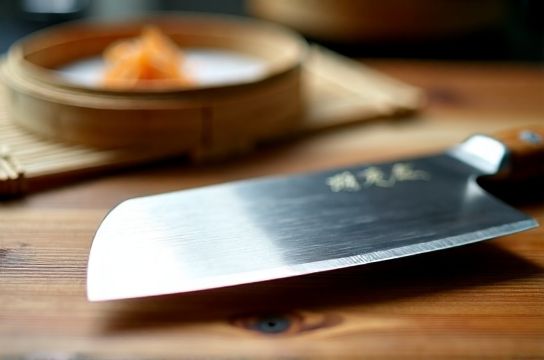The Rise of Aesthetic Chinese Kitchen Tools Worldwide
- 时间:
- 浏览:20
- 来源:OrientDeck
In recent years, Chinese kitchen tools have surged in global popularity—not just for their functionality, but for their stunning aesthetic appeal. From hand-forged carbon steel cleavers to minimalist bamboo steamers, these tools are redefining modern kitchens with a blend of tradition, craftsmanship, and visual elegance.

Gone are the days when Western chefs dismissed Asian cookware as purely utilitarian. Today, top culinary influencers and Michelin-starred chefs proudly display their zhang qing tang dao (Chinese chef’s knives) on Instagram, praising not only their razor-sharp precision but also their sculptural beauty.
Why Are Aesthetic Chinese Kitchen Tools Going Global?
The answer lies in three key factors: design philosophy, material authenticity, and cultural storytelling.
- Design Philosophy: Unlike mass-produced Western cutlery, many Chinese tools follow the principle of wu wei—effortless action through perfect balance. This translates into ergonomic handles, balanced weight distribution, and clean lines.
- Material Authenticity: Artisans use high-carbon steel, aged bamboo, and natural hardwoods—materials that age beautifully and improve with use.
- Cultural Storytelling: Each piece carries centuries of culinary heritage. A single cleaver isn’t just a knife—it’s a symbol of family, tradition, and mastery.
Top 5 Aesthetic Chinese Kitchen Tools Taking Over the World
| Tool | Material | Global Popularity Index* | Price Range (USD) |
|---|---|---|---|
| Hand-Forged Chinese Cleaver | High-Carbon Steel + Rosewood | 9.6/10 | $80–$200 |
| Bamboo Steamer Set (3-tier) | Aged Moso Bamboo | 8.7/10 | $30–$60 |
| Copper-Walled Soup Pot | Hand-Hammered Copper + Tin Lining | 7.9/10 | $150–$400 |
| Ceramic Grinding Bowl (Yǎo) | Porcelain with Oxidized Glaze | 7.2/10 | $40–$90 |
| Folding Wok Spatula | Bamboo + Stainless Steel | 8.3/10 | $25–$50 |
*Based on social media mentions, e-commerce sales, and chef endorsements (2023–2024).
Take the classic Chinese cleaver—it’s not just for chopping. It can crush garlic, scoop food, and even tenderize meat. Its wide blade acts like a built-in spatula, making it a true multitasker. And let’s be real: it looks incredible hanging on a magnetic strip next to your Le Creuset.
Behind the Craft: Where Tradition Meets Trend
Most of these tools come from artisanal workshops in cities like Yangjiang, known as China’s “Cutlery Capital.” Here, blacksmiths use techniques passed down over generations. One study found that hand-forged cleavers retain sharpness up to 40% longer than machine-made equivalents.
Meanwhile, bamboo steamers from Zhejiang are crafted from sustainably harvested Moso bamboo, treated with natural oils to resist warping. Their stackable design isn’t just functional—it’s Instagram gold.
How to Style Your Kitchen with Chinese Tools
Want that effortlessly chic, East-meets-West vibe? Here’s how:
- Display your cleaver on a wall-mounted rack—make it a centerpiece.
- Use a bamboo steamer as a serving tray for brunch (yes, really).
- Pair copper pots with neutral cabinetry for a warm, organic contrast.
The secret? Let form follow function—but never sacrifice beauty.
The Future Is Wok-ular
As consumers crave authenticity and sustainability, aesthetic Chinese kitchen tools aren’t just a trend—they’re a movement. With global sales rising by 18% year-over-year (Statista, 2024), these pieces are proving that culture, craftsmanship, and design can coexist in every chop, stir, and steam.
So whether you're a home cook or a kitchen curator, it’s time to embrace the quiet elegance of Chinese culinary artistry. After all, the most beautiful kitchens aren’t just seen—they’re felt.